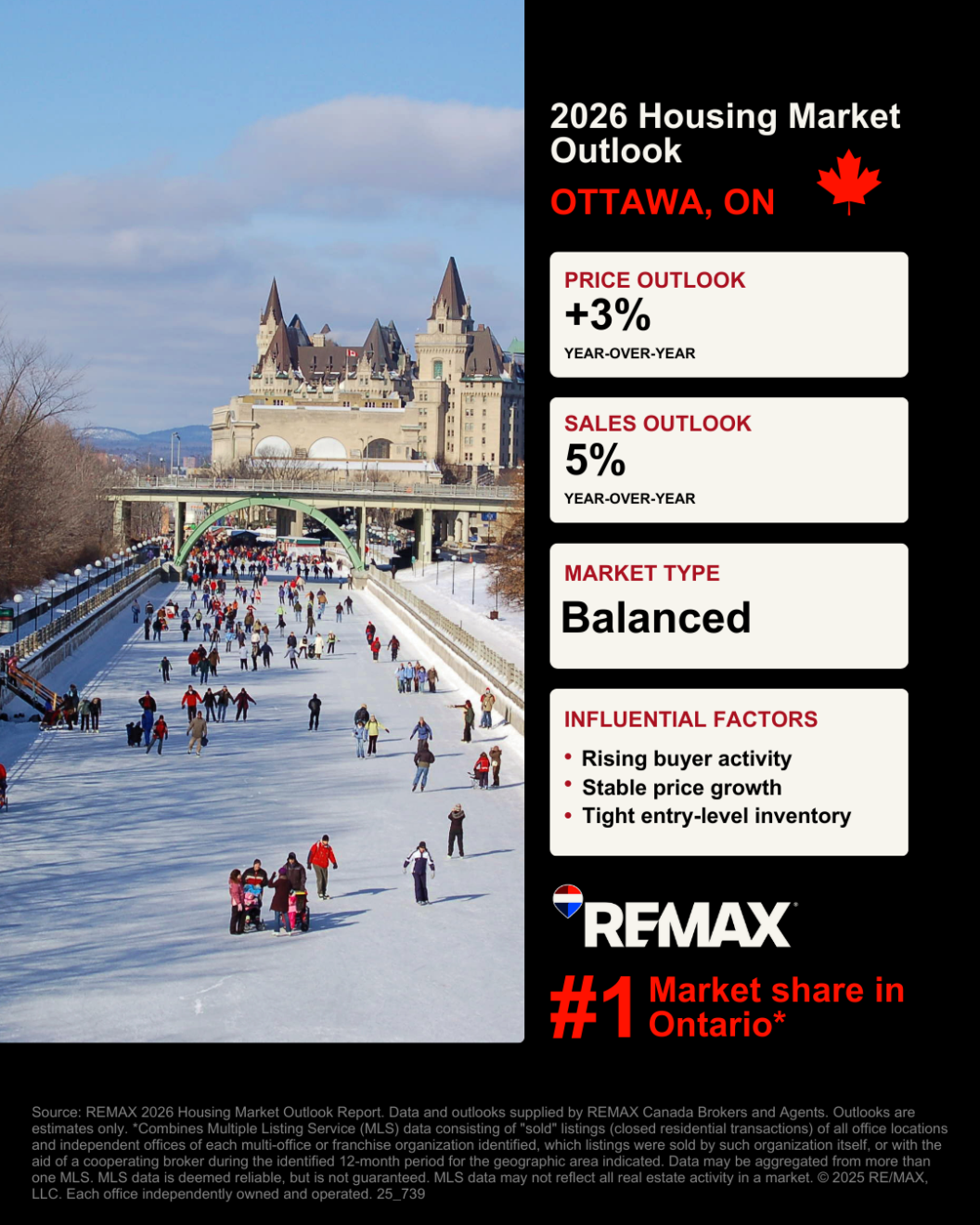The Ottawa market continued to move in a steady, positive direction throughout 2025. The average residential sale price rose by three per cent year-over-year, increasing from $680,193 to $700,869 across all property types. Sales activity also saw a 3.3 per cent lift, growing from 11,807 to 12,197 transactions. Inventory climbed as well, with a 21.3 per cent increase in listings compared to 2024.
Looking ahead, Ottawa is projected to see another three per cent gain in average residential prices in 2026. With interest rates now sitting in a more neutral range and overall market balance holding firm, the region is set up for continued, modest growth rather than any dramatic swings. Sales are also expected to rise by approximately five per cent next year as easing borrowing costs bring more first-time buyers and move-up buyers back into the market after holding off in 2023 and 2024.
Market Trends to Watch
Ottawa is expected to remain generally balanced in 2026, though performance will vary by segment. Entry-level townhomes and well-priced detached homes in established family neighbourhoods may lean slightly toward seller-favourable conditions as demand remains strong. Meanwhile, urban condos and higher-price ranges should stay balanced to mildly buyer-leaning, with more selection and value-focused purchasers shaping activity.
Overall indicators point to a healthier, more active market ahead. Prices have been trending upward through 2025, and year-to-date sales have already surpassed 2024 levels despite a cautious start to the year. Falling interest rates have meaningfully improved affordability, giving buyers more confidence and clarity around monthly payments.

The Role of the Rental Market
Ottawa’s rental market remains expensive, with rising rents outpacing wage growth. This continues to push many first-time buyers toward ownership earlier than planned, particularly in the condo and townhome segments where monthly carrying costs can be comparable to rent. High rents are a key driver behind increased demand in the more affordable ownership categories.
Inventory and Segment Highlights
Low inventory remains one of the biggest influences on the local market. While supply has improved since the peak pandemic years, it still falls short of demand in the mid-priced freehold segment. As more buyers re-enter the market with the support of lower borrowing costs, competition in desirable family neighbourhoods is expected to intensify, adding steady upward pressure on prices.
Other areas worth noting include:
• Luxury properties: Still moving at a slower pace, but selective buyers are returning.
• Condos: Higher inventory is keeping prices stable, with affordability-driven buyers leading the way.
• Rental conditions: Continued tightness is directly feeding demand from first-time buyers.
Outlook for 2026
Ottawa continues to show the stability it’s known for. Even with conversations around federal job restructuring, the region remains resilient thanks to strong immigration, solid local employment, and consistent demand in family-focused neighbourhoods. While 2026 isn’t expected to bring rapid price growth, Ottawa is well-positioned for steady, reliable increases in both sales and values as buyer confidence strengthens and borrowing conditions improve.

Get Started
Get to know Ottawa’s leading real estate agents, and how we make the market work for you.



